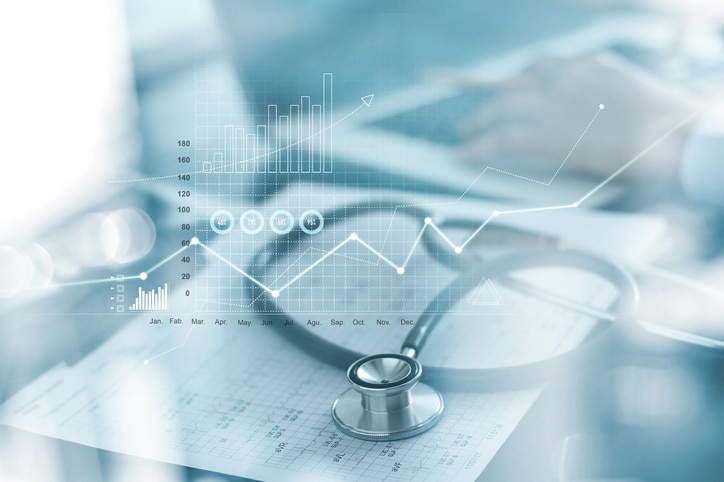Data Integration to Drive Outcomes for State & Local Health and Human Services Agencies

State and local health and human services agencies provide critical services to the most vulnerable populations across the nation. The technology systems that support administering these benefits are often complex and varied, ranging from modern cloud platforms to legacy mainframe applications.
The commonality across all is that data integration tools are required to enable the delivery of services in the most efficient and effective manner, while also complying with the ongoing changing policy landscape.
Most recently state and local HHS agencies are in the midst of public health emergency unwinding and finding themselves challenged with processing Medicaid redeterminations at record levels as they resume regular eligibility operations following the end of the Medicaid continuous enrollment condition.
We recently sat down with Jacque Gombach Founder & CEO of Captuva; and Bob Jeffcott, Principal Systems Engineer at Software AG Government Solutions, to gain their perspectives on data application integration and HHS agencies. They also shared key solutions for addressing the unwinding of Medicaid.
Be sure to also read Bob’s recent guest article on Health IT Answers about how HHS agencies can advance CX through an integrated citizen-centric approach.
Q: Integration across health and human services systems has been a topic that agencies have been working on for years, if not decades. What are the largest challenges with achieving enterprise system integration for health and human services agencies?
Jacque: While great strides have been taken in many state and local Health and Human Services (HHS) agencies toward enterprise integration, we still have a long way to go. Most HHS data still resides in legacy systems that are siloed due to a variety of reasons, but primarily due to siloed funding streams.
The data is inconsistent with low data quality, and is difficult to access. And while many agency CIOs and technology teams are working to address these issues, they are faced with workforce shortages, slow procurement processes, and increasing demands from not only their program administrators due to regulatory changes but from citizens to meet their needs in a more modern way.
Bob: I would also like to add that these HHS agencies are faced with an application ecosystem that is changing more rapidly with modern technology platforms. However, it’s tough for agencies to keep pace and to plan intentionally and effectively for this ever-changing landscape.
It’s often easier, either due to funding or time constraints, to develop ineffective approaches to integration such as brittle point-to-point, traditional non-real-time solutions, such as File Transport Protocol (FTP), shadow IT applications, manual processes or the ever-present Excel Spreadsheets, communicated via email.
Q: The CMS Interoperability and Patient Access rule presents the opportunity for State Medicaid agencies (SMAs) to enable the seamless and secure flow of patient data across the care continuum – with FHIR coming into the forefront. How does Software AG enable this type of health data exchange?
Jacque: The FHIR standard holds the promise to more seamlessly and securely exchange patient data across the care continuum. Ultimately the goal is for patients to receive the best care possible.
Software AG provides a low-code platform with a host of features to easily transform data and quickly develop what are called application programming interfaces (APIs) based on the FHIR standard.
While a technical term, APIs are essentially an accessible way to access and share data. These FHIR-based APIs allow access to patient data including clinical, claims, and encounter information.
Bob: Software AG’s FHIR server low code data mapping and orchestration capability provides the ability to transform data from any HHS application data source, such as mainframe and legacy data just as easily as the latest cloud applications to FHIR standard resources.
In addition, the Software AG FHIR Server solution provides an extensible FHIR Repository to store FHIR resources. The repository can be implemented using any cloud databases such as Amazon DynamoDB, MySQL, Azure Cosmos DB, MongoDB, and more. This is a tremendous benefit as HHS agencies can use their own choice of database as the FHIR repository.
Q: A focus of state and local HHS agencies right now is the Medicaid unwinding. Can you share observations on the current state of the unwinding and how states might apply current learnings to their future efforts?
Jacque: This is a very timely question, as we are five months into the official unwinding period. CMS releases state Medicaid and CHIP renewal data monthly that give us data informed insights into the current state of unwinding efforts.
It’s this data that HHS agencies are collecting, tracking, and reporting that can and should be used to uncover what’s working and what’s not. Agencies will be able to evaluate process or systems changes based on data versus anecdotal information.
Q: How might Software AG solutions support HHS agencies in these efforts?
Jacque: The solution that immediately comes to mind is Software AG’s ARIS Process Mining. Process mining is the deep-dive analysis, discovery and monitoring of an existing process. It allows you to quickly capture process data and then translate it into visual, interactive process flows to reveal dependencies, patterns, and anomalies.
HHS agencies will be in a great position with the data collected during the unwinding efforts to leverage process mining to pinpoint processes that can be improved. New processes can then be simulated to assess impact and outcomes prior to implementation. The visualization aspect of process mining is really powerful enabling a fact-driven approach to decision-making.
Bob: ARIS Process Mining is the ideal solution for this HHS challenge because it shows how information flows not only through the most efficient process – what I call the “happy path” – but causation for events that take longer. These often result in unwanted outcomes, or have other process inefficiencies. An automated root cause analysis points out the commonality and likely causes among those poorly performing processes.
Q: Looking ahead, what are some emerging systems modernizations on the horizon for state HHS agencies?
Jacque: Well, I think based on where our discussion has led with unwinding, I would probably point to eligibility and enrollment systems. Believe it or not, most eligibility and enrollment systems are nearing, or just past, their 10th birthdays.
While for some of us in this industry it seems like just yesterday that we implemented these systems, many are considering or approaching the “legacy” classification. This reality is only becoming more into focus as we progress through Medicaid unwinding and uncovering those learnings.
Many teams are experiencing first-hand how the lack of modern features such as robotic process automation and other artificial intelligence capabilities could help streamline processes and improve accuracy to avoid inadvertent disenrollment.
Q: What does Software AG offer for next generation eligibility and enrollment systems?
Jacque: I really appreciate Software AG’s ability to meet a client wherever they are. Agencies vary greatly in their E&E systems. The programs that are involved vary as some are integrated systems processing eligibility for multiple programs such as TANF, SNAP and childcare – while some are just processing Medicaid.
They also vary in the underlying technology and enhancements that have been done over the course of the last 10 or so years and most recently for the unwinding.
Agencies will also have a variety of plans for their systems – many will likely move to the cloud and some will seek to incrementally modernize. Some agencies will also want to further extend their integration capabilities with an enterprise approach or incorporate more systems. Other agencies may decide to replace them.
Regardless of the existing system and desired go-forward approach, Software AG can help!
Bob: It’s probably easiest to categorize “how” around the goals of business transformation, moving to and/or embracing cloud applications and delivering continuous data.
When it comes to business data transformation, ARIS Process Mining can help agencies pinpoint those processes for improvement and allow simulation of new processes. It can run on top of an eligibility and enrollment existing process engine, surfacing bottlenecks or outliers.
With an easy-to-use interface, the solution can be used by business analysts to visualize areas for improvement. The added benefit is that new processes can be simulated before putting into production the eligibility and enrollment system so you can test for the desired outcomes and adjust as necessary. This real-time simulation will lead to quicker, more informed decisions and ultimately enable agencies to deliver quicker eligibility results to the applicants.
Many states will be moving their eligibility and enrollment systems to the cloud and/or embracing new cloud technologies. With that comes new ways to integrate.
Software AG’s webMethods.io makes this transition seamless with the ability to quickly integrate applications in the cloud and end-to-end monitoring to follow the complete flow of transactions across multiple applications. It further puts the power of integration into the hands of a subject matter expert.
By enabling a drag and drop user experience with 400+ connectors, users can easily visualize integration processes and simulate to-be scenarios to assess impact. Common integration scenario templates, what we call “recipes,” are provided to give a quick start to integration development. And all this can be done regardless of complexity, as we recognize that many HHS applications are some of the most complex in a state or locality.
Finally, with the ebb and flow of eligibility applications and redeterminations, and the desire to improve processes surrounding these, we know data is key. The sources of data to access and incorporate into these decisions seem to increase every day along with the demand for publishing data and insights from these applications.
Conclusion
We live in a “data now” society and that’s not any different for HHS agencies. This is where Software AG’s StreamSets comes into play. With the ability to pull data from any source, be it the wide variety of data sources across the HHS landscape, data warehouses, or the mainframe, StreamSets allows you to pull that data and put it into the analytics tool of your choice.
This puts data into the hands of the data analysis in the format needed, at the time needed, safely and securely. This is really a game changer for HHS agencies given the wildly different data sources.
We would like to thank Jacque and Bob for sharing their insights with us. Please visit Software AG Government Solution here to learn more about our “built for government” solutions for helping HHS advance its mission.
Want to keep up with all things Software AG Government Solutions?
Share your email address below.

View our upcoming events and on-demand webinars







